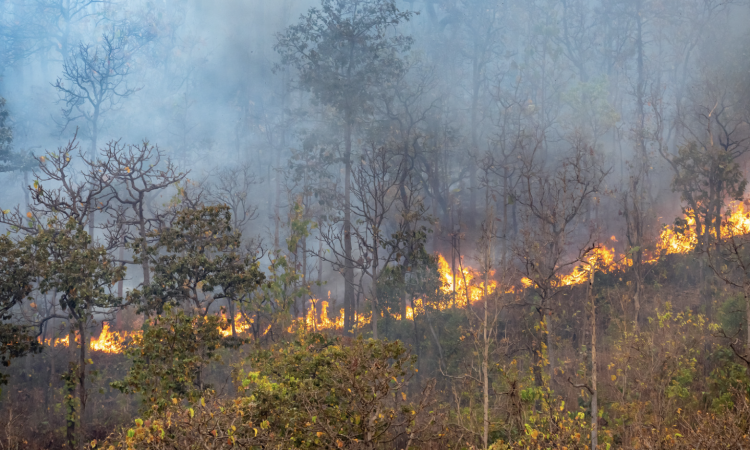
The imperils of climate change are many, with its impacts — both sudden and slow-onset — having extreme repercussions. The increasing temperature, erratic and incessant rainfalls, melting of glaciers, glacial lake outburst floods (GLOFs), declining snowfall, soaring heatwaves, frequent drought spells and irregular monsoon patterns keep the people on the sidelines. For the first time, the Supreme Court of India, in its recent judgment in April 2024, recognised the right against the adverse impacts of climate change.
Deadly, extreme heat waves as climate hazards have been quite rampant across the globe. Under the Paris Agreement signed in 2015, 196 signatories affirmed their intent to pursue efforts to limit the temperature increase to 1.5 degrees Celsius above pre-industrial levels. However, by 2023, the global temperature had increased to 1.17 degrees, creating an unnerving situation. 2023 was recorded as the warmest year since 1880.
2024 does not look to show any mercy either. Mungeshpur station in Delhi recorded 52.9 degrees Celsius – India's highest-ever recorded temperature. The Indian Meteorological Department is trying to determine if it is an outlier; however, it is evident that many regions across India have reeled under the extreme heat waves, resulting in loss of lives and livelihoods.
A key finding from the Hindu Kush Assessment, a report published by the International Centre for Integrated Mountain Development (ICIMOD), an intergovernmental institution, states that 1.5 degrees is too hot for the Hindu Kush Himalayas. This is due to elevation-dependent warming (EDW), a phenomenon where the rate of air temperature warming increases with elevation.
Thus, limiting warming to 1.5 degrees will result in a 2-degree increase in the mountains — an acute problem for the region. The Hindu Kush Himalayas comprise the Indian Himalayan Region and the Himalayan ranges in other neighbouring countries of India. In April 2024, the Indian Space Research Organisation (ISRO), in its report, also warned that glaciers are expanding at unprecedented rates in the Himalayan region.
The increase in temperature, longer dry periods, shorter wet periods, and many other factors have led to a rise in forest fire incidences. These rampant forest fires now blaze through the forest-covered mountains. Anthropogenic factors are the leading cause of forest fires, further aggravated by dry lands and vegetation in forest areas. During forest fires, the regions often become gas chambers. Forest fires typically exacerbate respiratory and cardiovascular diseases. According to the Forest Survey of India (FSI), 2,050 forest fire incidents were recorded from October 16, 2023, to January 16, 2024, in the Indian Himalayan Region (IHR). This is 296 more incidents than during the same period in 2022.
Uttarakhand, with a forest area covering 71% of its total geographic area, is one of the 13 states and union territories in the Indian Himalayan Region. Out of the 13 districts in the state, five — namely Pauri Garhwal, Tehri Garhwal, Bageshwar, Pithoragarh, and Almora — are reported as the most fire-sensitive regions. The increase in forest fire incidences, particularly in the Himalayan region, is quite alarming for its rich forest biodiversity and human life and livelihoods. The Chirpine trees (Pinus roxburghii) are often blamed for exacerbating forest fires in the Himalayas.
According to the Forest Department, Government of Uttarakhand, 1,721.4 hectares of forest land have been gutted due to more than 1,250 incidents in 2024 alone, as of 17 June. Recently, four firefighters were charred to death while trying to extinguish forest fires in the Almora district of Uttarakhand, and four others were injured and hospitalised for further medical assistance. In 2024 alone, 19 human casualties due to forest fires were reported in Uttarakhand, including ten deaths. Last month, the Hon’ble Supreme Court also expressed concern about forest fires and emphasised the need for permanent solutions.
The Uttarakhand Forest Department serves as the nodal agency responsible for performing various strategies and mitigation measures to control forest fires. These include establishing master control rooms across each forest division headquarters, deploying crew stations with 4-5 fire watchers, installing watch towers, conducting controlled burning and creating fire lines, removing dry biomass from forests for livelihood activities, and conducting awareness programs. In addition to these steps, the forest department utilises information technology and satellite alerts and promotes community participation in fire prevention and containment measures.
Preventing forest fires is a daunting task, considering the vast area of Uttarakhand covered by forests. In 2006, the National Forest Commission recommended that all fires burning in an area larger than 20 sq km should be declared a state disaster. Revisiting and thus modifying the suggestions given by the National Forest Commission, the forest fires, either man-made or natural, should also be declared as a state disaster in Uttarakhand or any other state. This would help the affected states in handling precarious situations more effectively.
Furthermore, it is essential to adopt more disaster preparedness and control mechanisms with the assistance of disaster management authorities, fill vacant human resources in forest departments, and provide advanced training and firefighting gear to firefighters from forest departments and communities to combat forest fires effectively.
Forest fires also pose a grave threat to India’s commitment to address climate change. Therefore, the time is now. It is quintessential that the menace of forest fires is checked before it checkmates us.
This article is authored by Mr. Manuj Pandey, Co-founder, Policy and Development Advisory Group
/articles/forest-fires-need-check-menace-it-checkmates-us